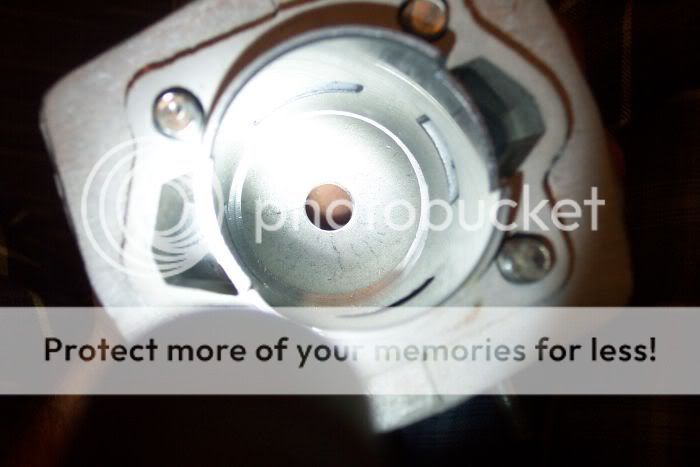I found some more info about designing a cyl head w/ a squish band that i wanted to share:
CYLINDER HEAD
Cylinder heads can be reshaped to change the power band. Generally speaking, a cylinder head with a small diameter and deep combustion chamber, and a wide squish band (60% of the bore area). Combined with a compression ratio of 9 to 1 is ideally suited for low to mid range power. A cylinder head with a wide shallow chamber and a narrow squish band (35-45% of bore area) and a compression ratio of 8 to 1, is ideally suited for high rpm power.
There are many reasons why a particular head design works for certain types of racing. For example; a head with a wide squish band and a high compression ratio will generate high turbulence in the combustion chamber. This turbulence is termed Maximum Squish Velocity, MSV is rated in meters per second (m/s). A cylinder head designed for supercross should have an MSV rating of 28m/s. Computer design software is used to calculate the MSV for head designs. In the model tuning tips chapters of this book, all the head specs quoted have MSV ratings designed for the intended power band changes.
BASIC TWO-STROKE TUNING
another site states something similar:
Heads and MSV
MSV - Maximum Squish Velocity rates the maximum velocity of the fuel air traveling across the squishband just before the piston reaches TDC. If MSV is to low the flame front will not burn the fuel air mixture effectively. If MSV is to high, detonation will occur and cause engine damage. The TSR programs calculate MSV for various types of heads.
Tub Head - Shape of the combustion chamber - like a tub or hat.
Hemi Head - Hemispherical shape for the combustion chamber.
Squish Band - Outer area of head that forces the unburned fuel air mix into the center chamber for combustion. The squish band angle is usually 1-2 degrees greater than the angle of the piston dome. Verticle clearance and squishband width affect MSV.
Squish - Verticle distance between top of piston and head. By measuring the step in the head and subtracting this number from the squish clearance you will have the distance the piston is below deck (negative deck). The negative deck measurement is needed to calculate port timing.
Squish Band Area - Varies from 30% - 60% of Bore area.
Step or Step Cut - The step cut in the head at the bore diameter. The squish band angle starts at the bottom of the step cut in the head. Measure the depth at the very edge of the step cut.
Note: Some heads have the step cut diameter 0.020"-0.030" thou more than the bore diameter. This allows the head to be offset to the piston. This creates less verticle clearance on one side. By moving head back and forth, leave extra clearance over exhaust port side. Then, center the head, by doing a squish test, on each side of the piston, over the wrist pin. Try to get the variation to within 0.001" thou. This is important if you are running near the mechanical limit for verticle (Squish) clearance.
2-stroke-porting.com - Terminology
if we reach a consensus on how to design this head hopefully we can make some real power.
here's a vid about what squish band is:
YouTube - CYLINDER SQUISH BAND CLEARANCE CHECK
I do not know a whole lot about this stuff, just tryin to learn as much as i can

-Justin
 -Justin
-Justin





